This post is part of series by Brookings experts on Trump’s 1st State of the Union.
In April, President Trump boasted about the confirmation of Justice Neil Gorsuch that he “got it done in 100 days.” He’s likely, in the State of the Union address, to point to the confirmation of district and appellate judges, reflecting a common refrain that, whatever his accomplishments overall, he is “reshaping the federal judiciary.” Actually, so far he hasn’t reshaped it much at all. The potential to do so is there, but hardly a sure thing.
To date, the Senate has confirmed only 10 of his 49 district court nominees, fewer than most recent presidents, although a large number are on the Senate’s executive calendar awaiting floor votes. But, a Trump fan gushed “[h]e has appointed 12 outstanding federal appellate judges—a record number for a president in his first year.” It is a record number, but barely. Kennedy and Nixon each appointed 11 circuit judges in their first years, and Carter, 10. Because there were fewer statutorily authorized judgeships in those years, though, their first-year appointees had a larger impact on the appellate courts’ composition. Trump’s 12 first-year appointees filled seven percent of today’s 179 appellate judgeships. Kennedy’s 11 appointees filled 14 percent of the 78 judgeships at the time.
People will bicker about how “outstanding” they are. Nine received over 40 negative votes, two others over 30, while Ralph Erickson, a former district judge, received only one negative vote for his appointment to the Eighth Circuit’s court of appeals. Their median age at nomination is just shy of 50 years, in line with appellate appointees in recent administrations.
To the “reshaping” claim: He has made the judiciary slightly whiter and more male—seven of his circuit appointees and nine of his district appointees are white males, compared to less than half of Obama’s.
The party-of-appointing-president balance overall and on individual courts has hardly changed at all. Despite 12 Trump appointees, the courts of appeal today have only two more Republican appointees than they did on Inauguration Day—74 up from 72. The same four courts that had majorities of Republican appointees on Inauguration Day have similar majorities today, but no more.
(The link between the party-of-appointing-president and decisions is real, but stronger in some types of cases than in others. And, appellate courts make almost all decisions by randomly drawn three-judge panels, which often do not mirror the entire court’s composition of active-status judges. Still, the party of appointment is a useful assessment tool.)
The quite modest changes are partly because 8 of the 12 appointees replaced Republican appointees, and the 12 appointees for the most part joined courts with already-strong majorities of Republican appointees. Three joined the 16-judgeship Sixth Circuit court of appeals, which had 10 Republican appointees on Inauguration Day, two joined the 17-judgeship Fifth Circuit court, which already had nine Republican appointees, and two joined the 11-judgeship Eighth Circuit court, which had only one Democratic appointee on Inauguration Day. And of the eight judges who left active service in 2017, six were Republican appointees.
This table shows the party-of-appointing-president breakdown on Inauguration Day and one year later.
| Inauguration Day 2017 | January 2018 | ||||||
|---|---|---|---|---|---|---|---|
| Circuit | R-Appt’d | D-Appt’d | Vacant | Total J’ships | R-Appt’d | D-Appt’d | Vacant |
| 1 | 2 | 4 | 0 | 6 | 2 | 4 | 0 |
| 2 | 4 | 7 | 2 | 13 | 4 | 7 | 2 |
| 3 | 5 | 7 | 2 | 14 | 5 | 7 | 2 |
| 4 | 5 | 10 | 0 | 15 | 5 | 10 | 0 |
| 5 | 9 | 5 | 3 | 17 | 10 | 5 | 2 |
| 6 | 10 | 5 | 1 | 16 | 11 | 5 | 0 |
| 7 | 6 | 3 | 2 | 11 | 6 | 2 | 3 |
| 8 | 8 | 1 | 2 | 11 | 9 | 1 | 1 |
| 9 | 7 | 18 | 4 | 29 | 6 | 18 | 5 |
| 10 | 5 | 7 | 0 | 12 | 4 | 7 | 1 |
| 11 | 3 | 8 | 1 | 12 | 4 | 7 | 1 |
| DC | 4 | 7 | 0 | 11 | 4 | 7 | 0 |
| FED | 4 | 8 | 0 | 12 | 4 | 8 | 0 |
| J’ships | 72 | 90 | 17 | 179 | 74 | 88 | 17 |
| % of all | 40.2% | 50.3% | 9.5% | 41.3% | 49.2% | 9.5% | |
Of course, more nominees are pending, more are coming, and additional judges appointed by both parties will leave active status. But given the situation today, the best-case scenario from the administration’s standpoint would be confirming all seven pending nominees, submitting nominees for the current 11 nominee-less vacancies and for the five already-announced future vacancies without nominees, and Senate confirmation of all of them.
This table shows the breakdown if that were to happen:
| Today | Trump best-case scenario | ||||||
|---|---|---|---|---|---|---|---|
| Circuit | R-Appt’d | D-Appt’d | Vacant | Total J’ships | R-Appt’d | D-Appt’d | Vacant |
| 1 | 2 | 4 | 0 | 6 | 2 | 4 | 0 |
| 2 | 4 | 7 | 2 | 13 | 6 | 7 | 0 |
| 3 | 5 | 7 | 2 | 14 | 7 | 7 | 0 |
| 4 | 5 | 10 | 0 | 15 | 6 | 9 | 0 |
| 5 | 10 | 5 | 2 | 17 | 12 | 5 | 0 |
| 6 | 11 | 5 | 0 | 16 | 11 | 5 | 0 |
| 7 | 6 | 2 | 3 | 11 | 9 | 2 | 0 |
| 8 | 9 | 1 | 1 | 11 | 10 | 1 | 0 |
| 9 | 6 | 18 | 5 | 29 | 12 | 17 | 0 |
| 10 | 4 | 7 | 1 | 12 | 5 | 7 | 0 |
| 11 | 4 | 7 | 1 | 12 | 5 | 7 | 0 |
| DC | 4 | 7 | 0 | 11 | 4 | 7 | 0 |
| FED | 4 | 8 | 0 | 12 | 4 | 8 | 0 |
| J’ships | 74 | 88 | 17 | 179 | 93 | 86 | 0 |
| % of all | 41.3% | 49.2% | 9.5% | 52.0% | 48.0% | 9.5% | |
The “Trump best-case scenario” is, to be sure, a hypothetical snapshot, with over 50 percent of appellate judgeships occupied by Republican appointees, Republican-appointee majorities stronger in four courts, one court that had had a slight majority of Democratic appointees split evenly, and weaker Democratic-appointee majorities on other courts. It assumes all current vacant judgeships as well as announced future vacancies get filled—24 confirmations, double the rate so far. But with the Republicans’ slim Senate majority, the press of other business, and increased election-year turmoil, a perfect nomination and confirmation record is a pipedream. And additional judges will leave active status, confounding the balance of party-of-appointing president.
Furthermore, keep in mind Republicans’ refusal to confirm more than two circuit judges in the final two years of the Obama administration—a sharp break in precedent, as I explained at the time. Should Democrats take control of the Senate in 2019, confirmations might stop altogether as payback.
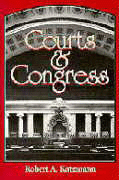
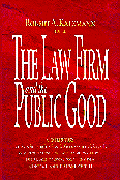
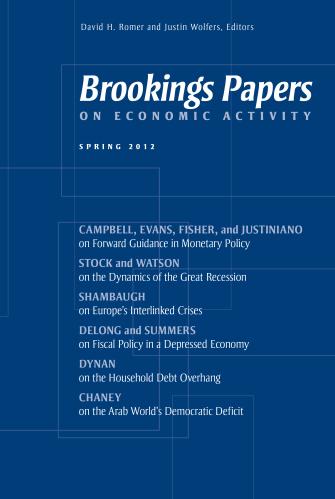

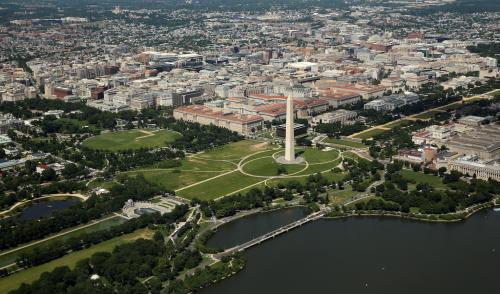
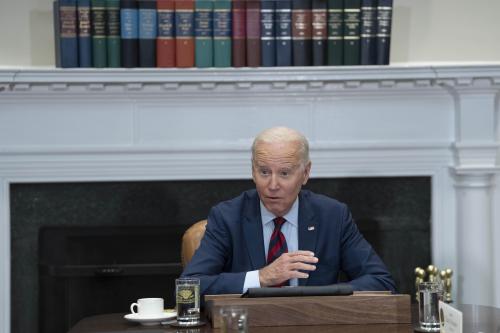




Commentary
Trump’s 1st State of the Union: Is he really reshaping the federal judiciary?
January 25, 2018